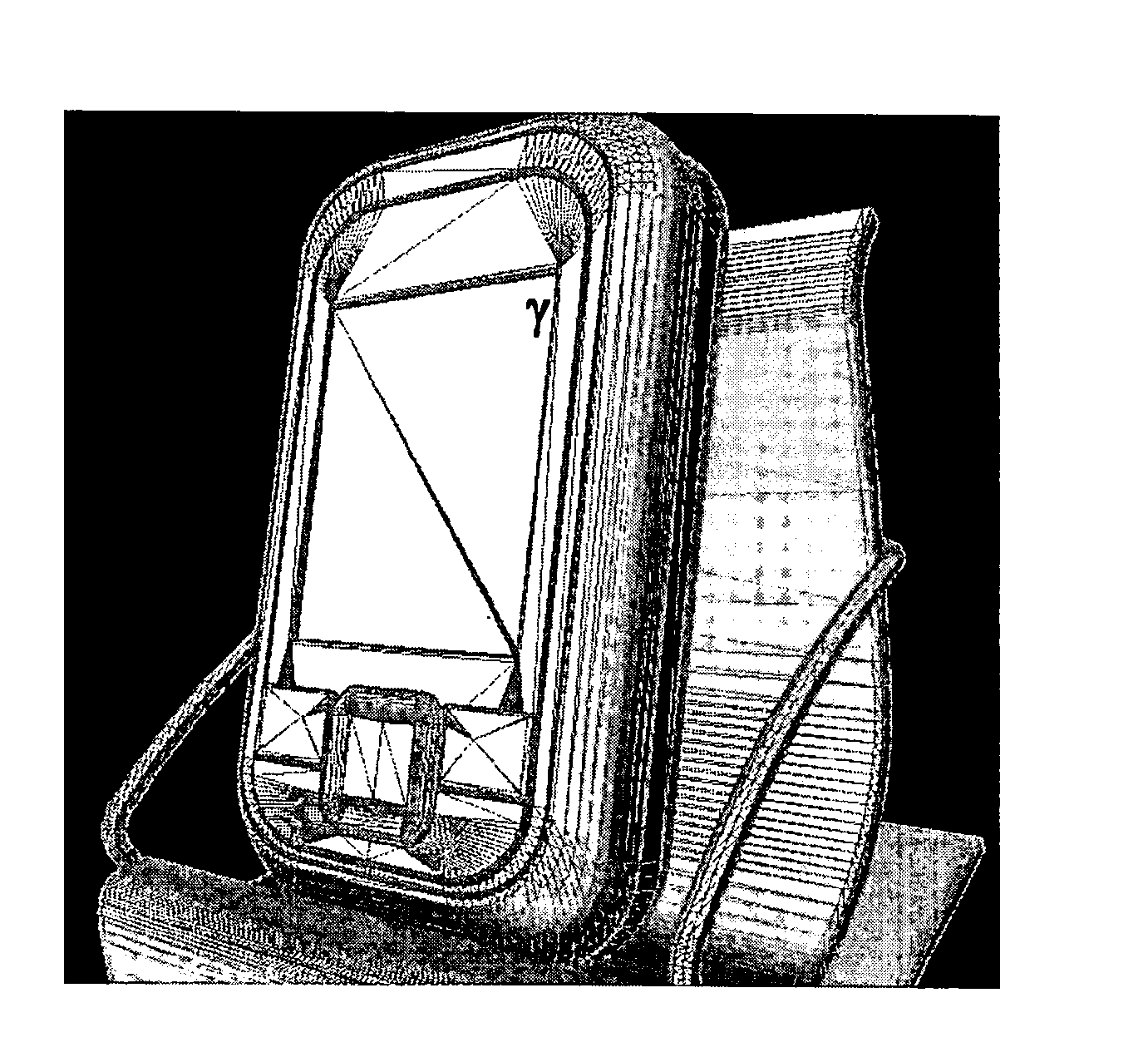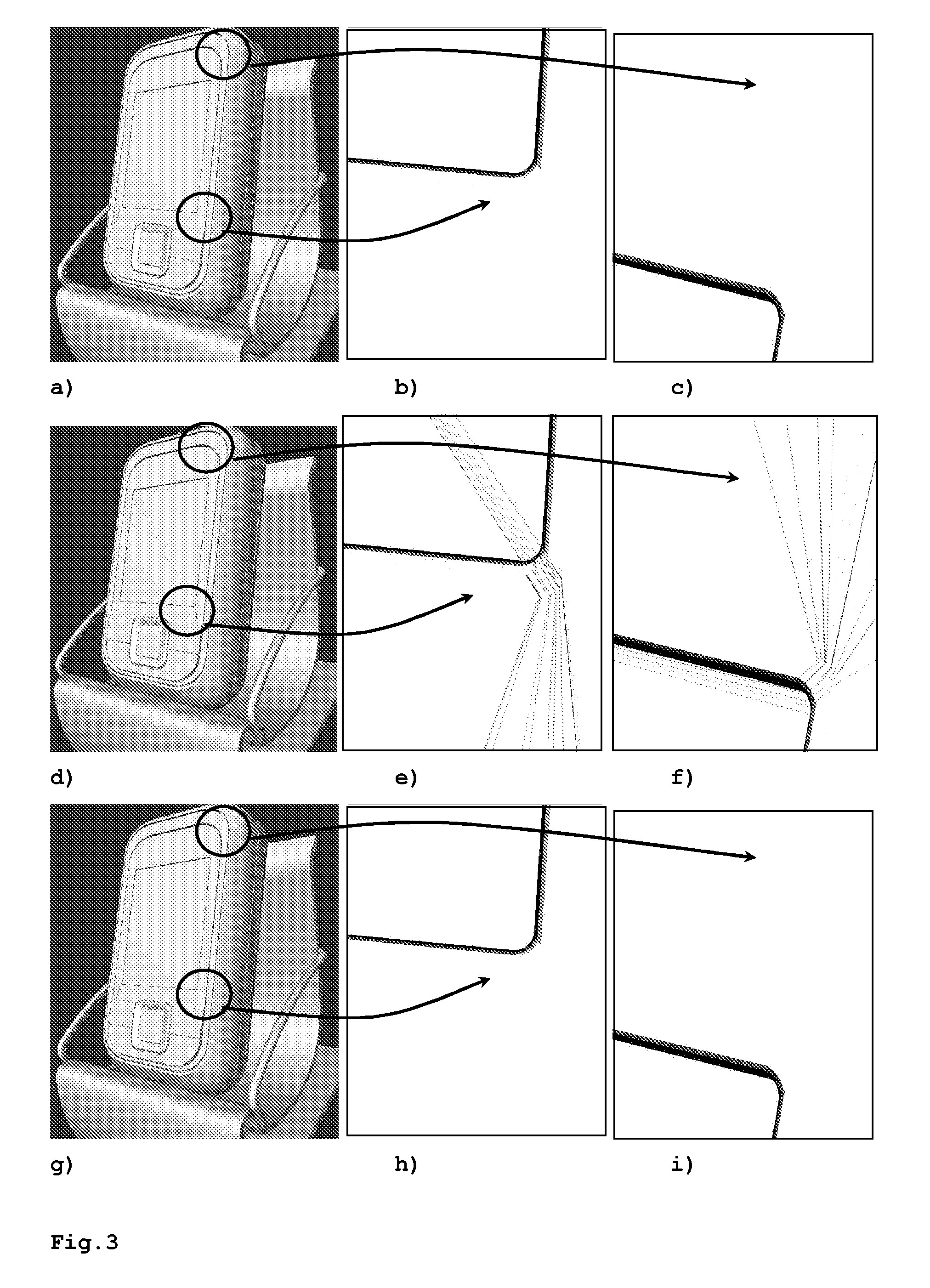Method for encoding/decoding a 3D mesh model that comprises one or more components
- Summary
- Abstract
- Description
- Claims
- Application Information
AI Technical Summary
Benefits of technology
Problems solved by technology
Method used
Image
Examples
Embodiment Construction
[0024]FIG. 1 shows a portion of a 3D mesh model with respective cartesian coordinate systems. The world coordinate system WCS with its three orthonormal axes Xw,Yw,Zw is valid for the whole model. A spanning triangle Tsp (uvr) is described relative to a reference triangle Tref (uvw). A local coordinate system LCS (with three orthonormal axes X,Y,Z) is usually defined at each reference triangle. The common side {right arrow over (uv)} of Tref and Tsp, which is called “active gate”, defines the local x-axis X. The middle point O of {right arrow over (uv)} is assumed to be the origin. The local z-axis Z is the normal of the reference triangle Tref. The local y-axis Y is then obtained by computing the cross product of the local z and x axes, and is therefore orthogonal to the xz plane. The local coordinate system LCS needs to be re-calculated for each current front vertex (r in FIG. 1). Since the range of the local coordinate values is not predefined, quantization in the local coordinat...
PUM
 Login to View More
Login to View More Abstract
Description
Claims
Application Information
 Login to View More
Login to View More - R&D
- Intellectual Property
- Life Sciences
- Materials
- Tech Scout
- Unparalleled Data Quality
- Higher Quality Content
- 60% Fewer Hallucinations
Browse by: Latest US Patents, China's latest patents, Technical Efficacy Thesaurus, Application Domain, Technology Topic, Popular Technical Reports.
© 2025 PatSnap. All rights reserved.Legal|Privacy policy|Modern Slavery Act Transparency Statement|Sitemap|About US| Contact US: help@patsnap.com



